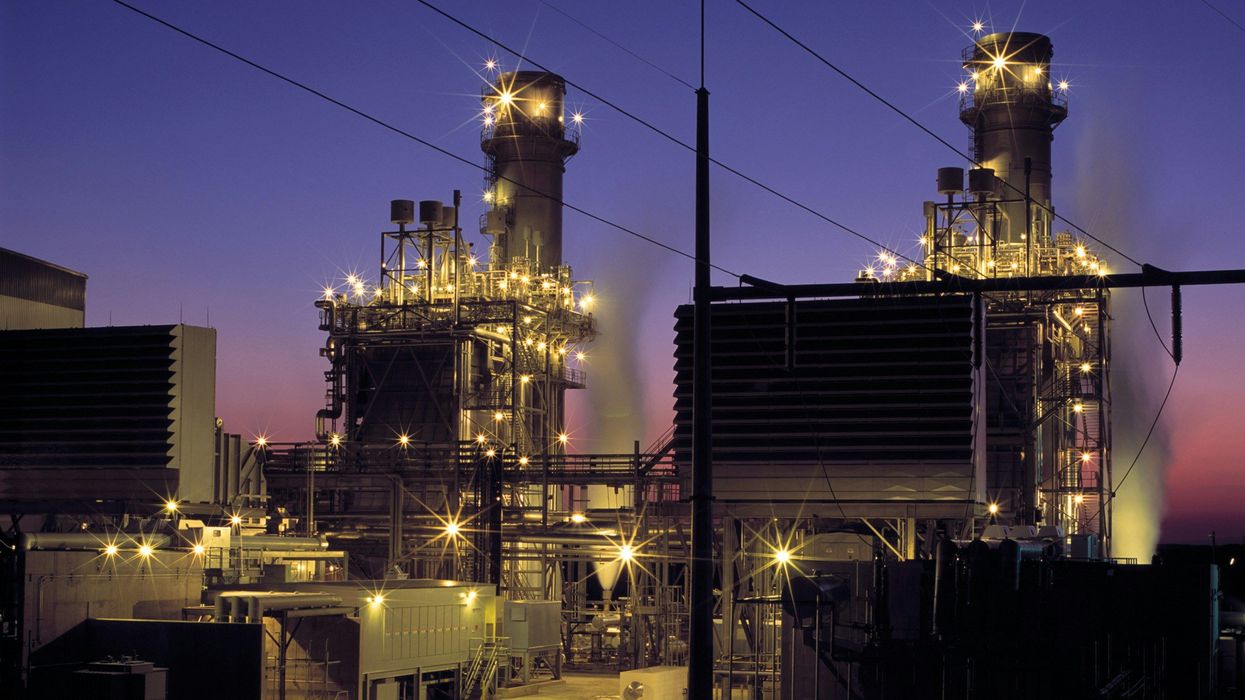PITTSBURGH—Dawn Winters never had trouble breathing before she moved to Pittsburgh's Bellevue neighborhood in 2014, but within a year her doctor diagnosed her with asthma and prescribed a daily medication to keep her airways open.
Winters grew up in New Jersey and moved to Pittsburgh for graduate school at Carnegie Mellon University in 2008. She and her husband were renting an apartment on the other side of town in Regent Square, had a new baby, and were looking to buy a home when their real estate agent sent them a news article about the appeal of Bellevue for young families. It looked perfect—close to downtown with a walkable main street lined with small businesses, and Victorian houses that were spacious but affordable.
No one told her it was also downwind of one of the largest polluters in the county.
"I had never heard of Shenango Coke Works before I moved to Bellevue," Winters told EHN. "No one ever told me how close the neighborhood was to an industrial site when we were looking at houses."

Winters was distraught when she found out about the plant and its long history of Clean Air Act violations. She worried about her own declining respiratory health, but was even more concerned about the impact the air might have on her daughter's young lungs. But then, in 2016, the Shenango plant shut down following several years of escalating community protest. It wasn't long before Winters was able to stop taking her daily asthma medication altogether. She said her respiratory health has steadily improved in the last two years—and she's not alone.
A soon-to-be-published study undertaken by the Allegheny County Health Department found emergency room visits for asthma and chronic obstructive pulmonary disease (COPD) dropped by 37.9 percent in the region the year after the plant closed. ER visits for cardiovascular diseases including heart attacks and strokes decreased by 26.5 percent.
The health department also monitored air quality in the region before and after the plant closure, and observed that annual levels of particulate matter pollution, which causes higher rates of asthma and heart disease, decreased by 11 percent—from 10.9 to 9.7 micrograms per cubic meter—in the year after the plant stopped its operations.
The U.S. Environmental Protection Agency's maximum threshold for annual average concentration of particulate matter pollution—meaning the level above which the air is considered harmful to public health—is 12 micrograms per cubic meter, while the World Health Organization's is 10. Even within those limits, particulate matter pollution is associated with both acute and chronic respiratory and problems.
"These numbers are pretty remarkable," John Graham, a senior scientist at the Clean Air Task Force who was not involved with the study, told EHN, referring to the emissions drop after Shenango Coke Works closed. "The fact that we know this facility closed and there were a large amount of emissions that went away, and that we're seeing a measurable, significant drop in health impacts is a powerful statement about how communities can be directly impacted by polluters in their midst."
Health Department hesitates on crediting closure
The Allegheny County Health Department, however, is reluctant to attribute the drop in emergency department visits to the plant closing.
"We didn't see the dramatic changes in the air quality that would lead us to feel comfortable saying that these changes in health outcomes were related directly [to the plant closure]," Dr. Karen Hacker, director of the Allegheny County Health Department, told EHN.
The county's chief epidemiologist LuAnn Brink, who led the study, added, "in the published literature, there's never been this much of a documented degree of effect given this small of a change in particulate matter. So we're asking ourselves whether there's anything else that could have contributed to the reduction in emergency room visits."
With that question in mind, they investigated whether there could have been a widespread change in emergency room access or insurance benefits in the region that might account for the drop in ER visits, but found none. They also checked to see whether there was just an overall drop in ER visits, but found that visits for injuries increased over the same time period. They compared meteorological data from year to year to see if wind and weather could have had an impact on the numbers, but both years had similar patterns.
In other words, none of those issues were factors.
They say anxiety over the pollution could have played a role.
"There was a lot of stress in that area around this industrial facility operating," Brink said, "and stress itself can cause some of these outcomes."
For comparison, the researchers also looked at particulate matter levels and ER visits for respiratory and heart issues in Clairton, near the Clairton Coke Works Plant, and in Tarentum, where there's no coke works plant. They observed that both the air quality and ER visits in Tarentum stayed more or less consistent. In Clairton, however, they reported a 12 percent drop in particulate matter pollution—the same percentage decrease observed around Shenango—but the number of emergency room visits for respiratory and heart problems increased there.
Brink and Hacker believe if the drop in particulate matter pollution was responsible for the improved health outcomes around Shenango, the same pattern should have been observed in Clairton.

Neville Island and Shenango Coke Works/Jon Dawson-Flickr
Air monitor math
After crunching the numbers, Graham thinks the data tells a different story.
"I believe the reduction in particulate matter shown from the monitor in Clairton is a phantom reduction," he said. "I don't think it's a true representation of annual changes between those two years."
The study looked at two air monitors in the regions around Clairton Coke Works—one in Liberty borough, and one in Clairton. The Liberty site monitors the air daily, while the one in Clairton collects data every sixth day. As a result, Graham said measurements reported for each year could be biased high or low by up to 10 percent, and the differences between 2015 and 2016 could bias the true difference in annual averages by nearly twice that.
He didn't observe the same potential for bias in the numbers reported for Shenango.
"I'm not saying the particulate matter pollution around Clairton didn't get reduced," Graham said, noting that Clairton Coke Works is a much larger facility than Shenango, "but I think that level reported is probably well above the actual change." The health department declined to comment on Graham's assessment.
Additionally, the predominant winds push air pollution away from the Clairton monitor, where the 12 percent reduction in particulate matter was observed, and toward the Liberty monitor, which only saw a 1 percent reduction. As of 2016, the annual average for particulate matter pollution at the Liberty monitor was still 12.8 micrograms per cubic meter—which exceeds both EPA and WHO thresholds—while the average near Shenango dropped to 9.7.
“Better” bad air days
It's also worth noting that while the changes in annual particulate matter averages were relatively small, the changes on the worst air days were dramatic: Before the plant closed, the highest daily level for particulate matter recorded around Shenango was 38.9 micrograms per cubic meter, while the year after it was 28.8—a 26 percent decrease.
Virtually all the worst air quality days saw a similar reduction in pollution the year after the plant closed, while the cleanest air days were unaffected. By comparison, Clairton saw a daily high of 58.1 micrograms per cubic meter PM in 2015, which dropped to 56, just 3.61 percent lower, the following year.
Spikes in particulate matter on bad air days cause the type of acute respiratory and health issues that require emergency room visits, while the annual averages are more likely to impact long-term health.
"Those annual changes only happened because we saw a reduction in air pollution on days when it was at its peak," Graham said. "That's why focusing on pollution sources in a community can be effective when it comes to improving overall air quality."
Getting below dangerous thresholds
Dr. Deborah Gentile, a Pittsburgh pediatrician and member of the Pediatric Alliance, believes that getting below those thresholds is the key to improving health outcomes.
"People tend to think we've decreased air pollution this much, so why haven't we seen asthma rates go down at a corresponding rate," Gentile told EHN. "But if you were smoking three packs of cigarettes per day and you dropped down to two, you're probably not going to see a change in your health outcomes. In Clairton we still haven't gotten particulate matter below the threshold where it's dangerous."
Gentile recently conducted a study that found Clairton Elementary School students have roughly double the asthma rates of other Pennsylvania children. She's in the process of finalizing a second study on asthma rates in elementary schools near the former Shenango Coke Works site. Her findings are still preliminary, but Gentile reported that after the Shenango plant closed, the rate of physician-diagnosed asthma in elementary school students in the region decreased from 25.3 percent to 19.1 percent, and the rate of uncontrolled asthma dropped from 64.9 percent to 37.9 percent.
Brink and Hacker are slated to discuss their findings at the May 10 community meeting of Allegheny County Clean Air Now alongside Gentile and Graham. Members of the community group, including Dawn Winters, urged the health department to undertake the study after the plant closed, and have shared their stories about life before and after the plant closure in an online collection of essays, "Living Downwind." The group hopes their stories, along with the health department's findings, will help empower other communities to fight for cleaner air.
"I'm thankful Shenango closed within a fairly short amount of time after we moved here," Winters said. "But Pittsburgh's air quality is still a huge problem overall."
Editor's note: This is the first story in EHN's series about asthma, air pollution and solutions in the Pittsburgh region. Stay tuned for more.
- ER visits for heart problems plummeted after Pittsburgh coal processor shut down - EHN ›
- People with asthma in Pittsburgh have been told it’s not safe to breathe outdoors for 25% of days in 2019 so far - EHN ›
- “Stop hurting us:” Protestors plead for their health outside a Pittsburgh gathering of coal and steel execs - EHN ›

















